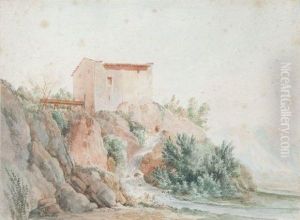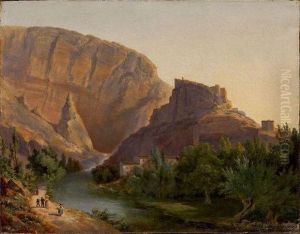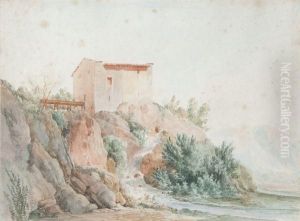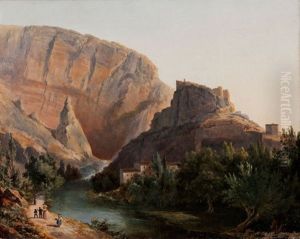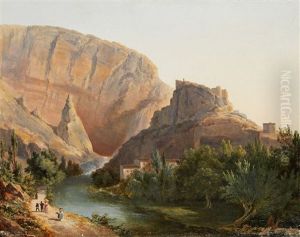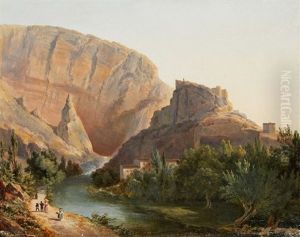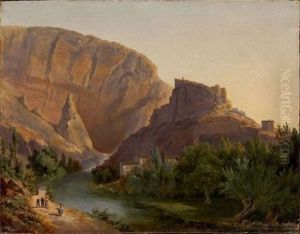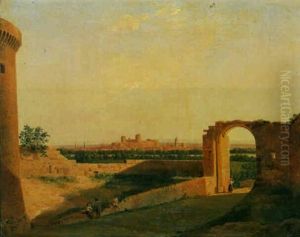Antoine Chantron Paintings
Antoine Chantron was a French artist born in 1847, who made significant contributions to the art world during the late 19th and early 20th centuries. His life spanned a period of great change in the art world, witnessing the transition from traditional academic art to the birth of modern movements. Chantron was deeply rooted in the academic tradition, having been trained in the prestigious École des Beaux-Arts in Paris, the epicenter of art education in France. His education under renowned artists and educators of the time provided him with a strong foundation in the techniques and principles of classical art.
Chantron's body of work primarily consists of paintings and drawings that reflect the academic style of art, which emphasized realism, detailed depiction, and classical themes such as mythology, history, and allegory. He was particularly known for his masterful use of light and shade, a skill that added a dramatic quality to his works. Despite the rise of Impressionism and other avant-garde movements during his lifetime, Chantron remained committed to the academic style, showcasing his mastery in exhibitions and receiving accolades for his work.
As an artist, Chantron was somewhat conservative, adhering closely to the traditions and standards set by the French Academy. However, his works did exhibit a certain sensitivity and a delicate touch that set them apart from the more rigid and formal academic pieces of his contemporaries. Chantron's paintings often featured figures from mythology and literature, rendered with a sense of idealism yet imbued with a palpable emotional depth. His portrayal of female figures, in particular, reflects both the idealized beauty characteristic of academic art and a nuanced expression of character and emotion.
Throughout his career, Antoine Chantron participated in numerous exhibitions, most notably the Paris Salon, where artists of the time sought recognition and validation. His contributions to art were not only limited to his own creations but also included his role as a mentor and teacher to younger artists, passing on the principles of academic art to the next generation. Chantron's death in 1919 marked the end of an era for French academic art, as the world moved increasingly towards embracing modern artistic expressions. Despite this, his works remain a testament to the skill, precision, and dedication of academic artists in the 19th century, offering insight into an important period in the history of art.
